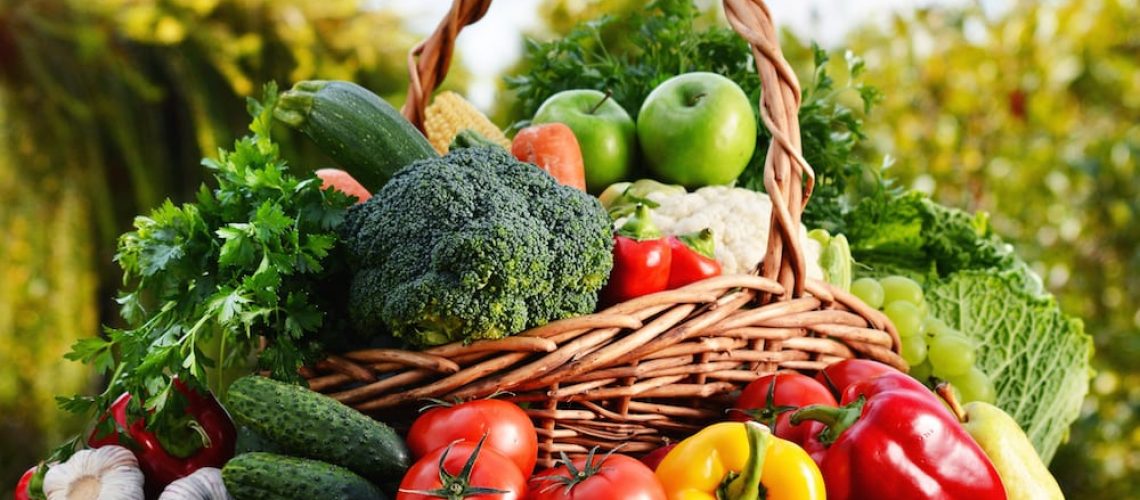- SHOP ONLINE
- AT THE GARDEN CENTRE
- BE INSPIRED
- LANDSCAPE SOLUTIONS
- EMPLOYMENT
- ABOUT US
Menu
- SHOP ONLINE
- AT THE GARDEN CENTRE
- BE INSPIRED
- LANDSCAPE SOLUTIONS
- EMPLOYMENT
- ABOUT US

“Essential advice for the gardener: grow peas of mind, lettuce be thankful, squash selfishness, turnip to help thy neighbor, and always make thyme for loved ones.”
~Author Unknown~
Looking ahead to the summer season, you may be thinking about those goals you’re setting for your gardens – why not try your hand at vegetable gardening? While you may not be looking to harvest the life puns talked about above, you can certainly reap the nutritional rewards of your hard work! Vegetable gardening can be the most richly rewarding area for any gardener, beginner or experienced, because there is nothing quite like tasting the fresh, crisp and juicy produce harvested right from your own garden.
Even while the winter chill is still lingering in the spring air, you can easily start growing your own vegetable plants from seed indoors!
How to Start Seeds Indoors
Once the weather warms up outdoors and the threat of frost is past, you can then transplant your vegetable plants directly into your garden bed.
Why Plant your Own Vegetables?
Whether you have a large amount of space to work with, a small few square feet of soil, or a few containers and pots – vegetable gardening is totally possible for you! Planting, maintaining and harvesting your own vegetable garden may seem like it’s more work than anything else; however, there are a number of benefits to growing your own food!
Saves Money
With the rising cost of food, growing your own vegetables will help cut back on the grocery bills! Every little bit counts, and having a variety of plants will allow you to cross off some of those grocery items and save along the way.
Vegetable plants come at very little cost and more than make up for it by providing plentiful produce. For example, a $2 tomato plant can produce more than ten pounds of tomatoes throughout the summer, or two pepper plants can produce approximately ten peppers throughout the season.
Wonderful Taste
Fresh-from-the-garden produce always beats the flavour of grocery store produce that’s been sitting for days or shipped in! With your own garden, you can harvest when you need the food, sometimes even minutes before being served, providing you with crisp, unbeatable freshness for your healthy family recipes.
Terrific Family Activity
Vegetable gardens provide the ageless opportunity of teaching your kids about responsibility and about the benefits of learning self-sufficiency. It is a great activity to do as a family and very rewarding when you can all eat the yummy results!
Inspire Healthy Eating
Eating vegetables on a daily basis is a great way to maintain health. By eating produce straight from your garden, you eliminate the worry about where your food comes from, how it was grown and what chemicals it may have come into contact with. You get to have complete control over what goes into your food and onto your table!
What Should I Plant?
A great thing to keep in mind when growing your own food is to plant food that you will eat on a consistent basis. Most plants keep producing throughout the summer, while others only yield a single crop; therefore, planning your planting with this in mind will allows you to produce a sufficient amount without letting anything go to waste.
Another helpful reminder is that many vegetables can be canned, allowing you to enjoy the freshness and homemade qualities of your garden throughout the winter. Be sure to plant in quantities that will allow you to get the right amount if you want to stock the cupboards for the winter months. Pay attention to the tags of plants – this will give you the yield information, when to harvest, and the general qualities of the plant.
Some of the easiest plants to grow that produce more than a single item throughout the summer are:
Easy-to-grow plants that produce one item per seed:
There are a number of factors to take into consideration when planting your vegetable garden. At Royal City Nursery, we are here to help! We can help you with questions about your garden layout, plant options that are best suited to your location, soil type, as well as any other questions you may have.
Stop by today to see our selection of vegetable seeds and plants, as well as to stock up on items you may need to get your garden off on the right foot.
Set those summer goals high – it’ll be worth it!
HOURS
JOIN US YEAR-ROUND!
Hours of Inspiration
Monday to Friday: 9am – 6pm
Saturday: 9am – 5pm
Sunday: 10am – 5pm
BE INSPIRED
Sign up for our E-Newsletter to receive garden tips, landscaping advice and more, delivered right to your inbox.
Sign up today!
Find Us